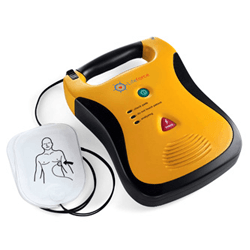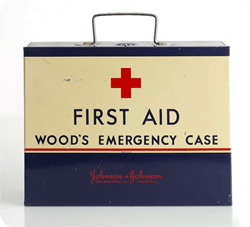 Automated External Defibrillators (AEDs) are becoming more prevalent within the wider community. For example there are national strategies in place actively promoting their placement in schools; public places such as stations. Many workplaces have voluntarily invested in this equipment.
Automated External Defibrillators (AEDs) are becoming more prevalent within the wider community. For example there are national strategies in place actively promoting their placement in schools; public places such as stations. Many workplaces have voluntarily invested in this equipment.
Evidence suggests that where Automated External Defibrillators (AEDs) have been used the outcomes are far more favourable for an individual who suffers from a heart attack than if it is delayed until the arrival of the emergency services.

 First Aid Kit – With first aid kits being a common feature of everyday life, you would be forgiven for thinking that they have been around for centuries.
First Aid Kit – With first aid kits being a common feature of everyday life, you would be forgiven for thinking that they have been around for centuries. The HSE have stated that the use of an AED should now be included as standard on all workplace first aid courses. This brings first aid training in line with the Resuscitation Council (UK) opinion that using an AED now forms a standard part of the basic life support training lesson plan.
The HSE have stated that the use of an AED should now be included as standard on all workplace first aid courses. This brings first aid training in line with the Resuscitation Council (UK) opinion that using an AED now forms a standard part of the basic life support training lesson plan.